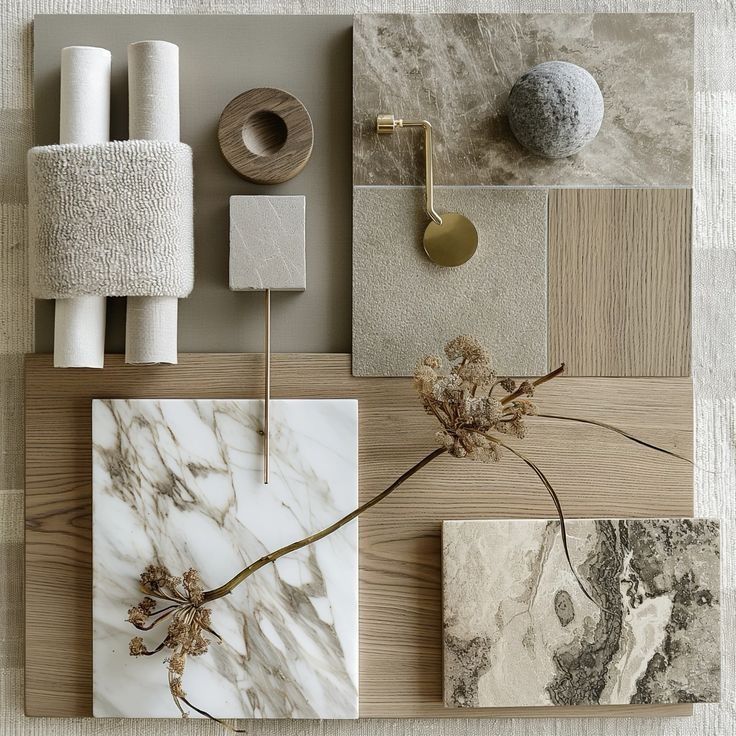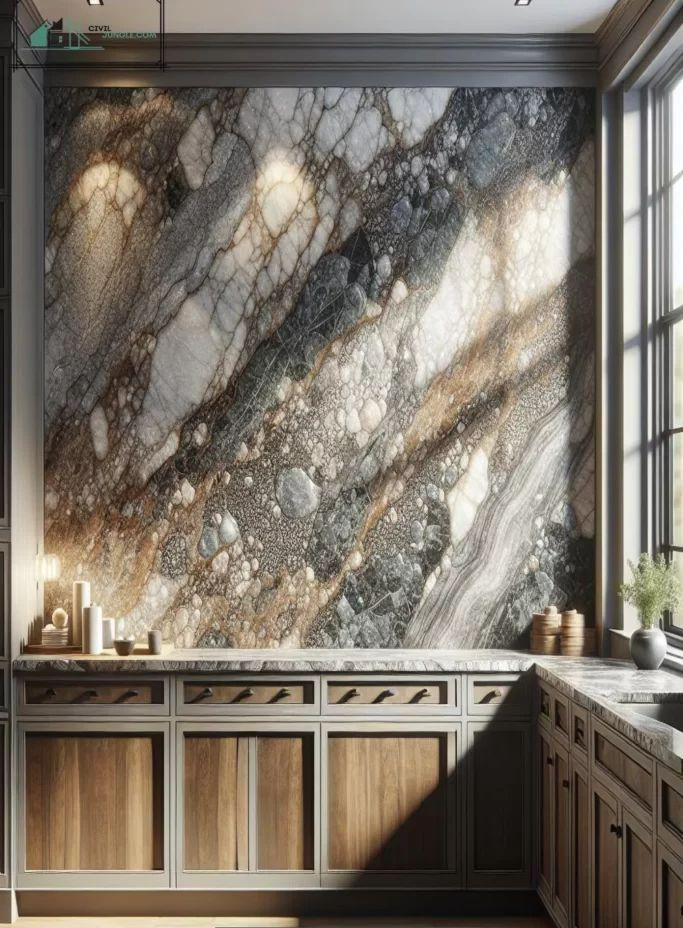Hard Choices
Porcelain / Ceramic Tiles vs. Natural Stone

When it comes to choosing the perfect material for your floors, walls, or countertops, the options can be overwhelming. Two of the most popular categories of materials are porcelain or ceramic tiles and natural stone, but what exactly is the difference? Which is the right choice for your space?
In this blog, we’ll break down the pros and cons of porcelain/ceramic tiles versus natural stone to help you make an informed decision for your next project. Whether you’re renovating your kitchen, designing your bathroom, or updating your floors, understanding the nuances of each option will ensure your decision is the right one for both your style and needs.
Porcelain and Ceramic Tiles: Durability Meets Design
Porcelain and ceramic tiles are often grouped together, but they do have some key differences.
What are they?
- Ceramic Tiles are made from a mixture of clay, earthen minerals, and water. They are then baked in a kiln at high temperatures, giving them their hardness and color.
- Porcelain Tiles are a subset of ceramic tiles, but they are made from finer, denser clay and fired at higher temperatures. This gives them a more water-resistant and durable surface than standard ceramic.
Advantages:
- Affordable: In general, porcelain and ceramic tiles are more budget-friendly than natural stone options, making them a popular choice for homeowners and designers.
- Durability: Both types are resistant to scratches and stains, though porcelain generally offers superior durability and moisture resistance. They're great for high-traffic areas.
- Easy to Maintain: These tiles are easy to clean. A simple wipe-down with soapy water is often enough to keep them looking pristine.
- Variety of Designs: Whether you want sleek, modern finishes or something that mimics the look of wood, marble, or stone, ceramic and porcelain tiles come in a wide variety of styles, textures, and colors.
- Water Resistance: Porcelain tiles are particularly ideal for wet areas, like bathrooms and kitchens, due to their low porosity.
Disadvantages:
- Cold and Hard Underfoot: While durable, porcelain and ceramic tiles can feel cold and hard to the touch, which can be uncomfortable in some areas, especially in colder climates.
- Grout Lines: The grout lines between tiles are more visible, and grout can stain over time, requiring maintenance to keep it clean and fresh.
Natural Stone: Timeless Elegance and Luxury
Natural stone, as the name suggests, is sourced from the earth and includes materials like marble, granite, limestone, travertine, and slate. These stones have been used for centuries in some of the most iconic architectural designs.
What is it? Natural stone tiles are cut from raw stones, each with its own unique color and texture. They tend to have a more organic, natural appearance compared to the manufactured look of porcelain and ceramic tiles.
Advantages:
- Aesthetic Appeal: Natural stone has an inherent luxury and beauty. Each piece is unique, showcasing the natural veining, grains, and imperfections that give it character.
- Long-Lasting: Many natural stones, especially granite and marble, are incredibly durable and, if properly cared for, can last a lifetime. Over time, they may even develop a desirable patina.
- Adds Value: Because of its luxurious appeal, natural stone can increase the value of your home. It's a timeless material that often appeals to high-end buyers.
- Variety: Like porcelain, natural stone comes in a wide variety of colors, patterns, and finishes, from the sleek elegance of marble to the earthy, rustic tones of slate.
Disadvantages:
- Higher Cost: Natural stone is typically more expensive than porcelain or ceramic tiles. Not just the material itself but also the installation costs can add up, as many natural stones require professional installation.
- Porosity and Maintenance: Many types of natural stone are porous, meaning they can absorb liquids and stains. Regular sealing is required to maintain their appearance and durability. Additionally, natural stone requires more care when cleaning—some stones, like marble, can be damaged by acidic substances (think lemon juice or vinegar).
- Slipperiness: Some natural stones, especially polished marble or granite, can be quite slippery when wet, making them less ideal for wet or high-traffic areas unless a non-slip finish is applied.
Which Should You Choose?
Choosing between porcelain/ceramic tiles and natural stone ultimately depends on several factors—budget, maintenance preferences, style, and the function of the space.
- If you’re on a budget and want something durable and easy to maintain, porcelain or ceramic tiles may be the right choice. They’re versatile, come in many styles, and are less costly than natural stone.
- If you're looking for luxury and timeless beauty, and are willing to invest in both higher material and maintenance costs, natural stone offers an unmatched level of elegance and sophistication.
- For high-moisture environments, porcelain tiles (especially the more water-resistant ones) have the edge in wet areas like bathrooms and kitchens.
- For unique design: If you want something that stands out with natural variations, natural stone tiles provide a level of individuality that no manufactured material can replicate.
The decision between porcelain/ceramic tiles and natural stone can be a hard one—each option offers distinct advantages that can elevate your space. Whether you choose the easy-care, budget-friendly porcelain tiles or the luxurious, timeless appeal of natural stone, both materials have the potential to create a stunning, functional design in your home. So, weigh your priorities—be it budget, style, or maintenance—and you'll make the choice that fits your vision perfectly.
Happy tiling!






